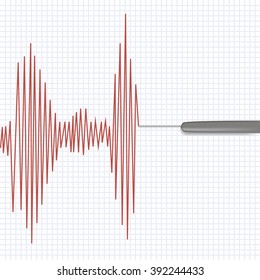The Truth Behind Lie Detector Tests: Myths vs. Reality
The Truth Behind Lie Detector Tests: Myths vs. Reality
Blog Article

When it comes to uncovering the truth, many turn to the intriguing world of lie detector tests. These tests, also known as polygraph examinations, have long been a subject of fascination and debate. From crime dramas to real-life interrogations, the idea of a machine that can detect deception is both captivating and contentious.
However, beneath the surface of this popular tool lie a myriad of myths and facts. Understanding the complexities and nuances of lie detector tests is essential for grasping their true value and limitations. In this article, we delve into the intricate workings of these tests, separating truth from fiction to uncover the reality behind lie detector examinations.
History of Lie Detector Tests
Lie detector tests, also known as polygraphs, have a long history dating back to the early 20th century. The first prototype was developed by William Moulton Marston in the 1920s. He based its principles on measuring blood pressure to detect deception.
The first practical lie detector machine was created by John Augustus Larson, a police officer, in the 1920s. His device incorporated measurements of blood pressure, pulse rate, and respiration to determine if a person was being truthful.
Over the years, advancements in technology have refined lie detector tests. Modern polygraph machines now monitor additional physiological responses like sweat gland activity, making them more accurate in detecting lies. Despite their widespread use, controversy still surrounds the reliability and ethics of lie detector tests.
How Lie Detector Tests Work
When someone undergoes a lie detector test, several physiological responses are measured. These include changes in heart rate, blood pressure, respiration, and skin conductivity. The idea is that when someone is being deceptive, these indicators may show noticeable fluctuations.
During the test, the individual is asked a series of questions while these physiological responses are being closely monitored. The test administrator analyzes the data from these responses to determine patterns that may indicate whether the person is telling the truth or being deceptive.
It's important to note that while lie detectors are commonly used, their accuracy has been a topic of debate. Factors such as a person's emotional state, medical conditions, and even their beliefs about the test can influence the results.
Debunking Common Myths
Accuracy: Many people believe that lie detector tests are infallible and can always detect lies with 100% accuracy. However, the truth is that lie detector tests are not foolproof and can sometimes yield inaccurate results. Factors such as the individual's emotional state, stress levels, and the skill of the examiner can all impact the reliability of the test.
Lie detector examPhysical Responses: A common myth about lie detector tests is that they can directly detect lies by measuring physical responses such as heart rate and sweating. While it is true that these tests monitor physiological changes, these responses can also be triggered by other factors unrelated to deception, such as anxiety or nervousness. Therefore, interpreting these physical responses as indicators of lying can be misleading.
Legality: There is a misconception that lie detector test results are admissible as evidence in court. In reality, the admissibility of lie detector test results varies by jurisdiction, and many courts do not consider them to be reliable enough to be used as conclusive evidence. This is due to the potential for false positives and the lack of standardization in the administration of such tests.
Report this page